
The Rio Claro Nature Reserve is one of the places in Antioquia I’ve known about since arriving in 2009, but just hadn’t found the occasion to visit.
Located three to three and a half hours east of Medellin along the highway that runs to Bogota, the 250-hectare reserve began as a private initiative way back in 1970.
I recently found my occasion to visit when friends Eric and Karen from the Trans-Americas blog offered me and Viviana a lift on their way to Bucaramanga.
They’ve been driving their red Chevy pick-up truck through Latin America for the last five years, most of that time having been in Central America. Earlier this year, they arrived in Colombia via Panama, and had been using Medellin as a base.
One Friday morning not too long ago, I overslept my alarm, immediately making us an hour late to leave the city. Once I got my act together, I collected Viviana, and we took a taxi downtown to meet up with Eric and Karen.
The drive east featured lots of twists and turns, but was not as nauseating as it seemed in 2011 when I had to take the bus to Bogota to apply for a new passport.
Once we passed the turn off for Guatape, we regularly found ourselves behind buses and 18-wheelers. This added to our travel time, and is all but unavoidable, even if you’re as aggressive a driver as the average Colombian.
Eric and Karen had visited two waterfalls on a prior trip (to Hacienda Napoles) along this stretch of road, therefore they wanted to show us them as well.
The first waterfall in a small town called San Francisco had a pool with freezing cold water, which we all took a dip in. The second was actually a series of two or three waterfalls at least 300ft (100m) tall.
We also stopped for lunch at a roadside restaurant called Todo Rico, which serves excellent fried yucca: crisky on the outside, soft and moist on the inside.
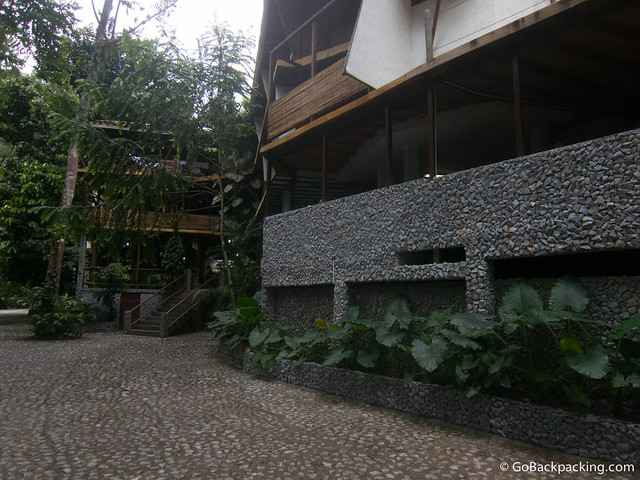
Between the late start, waterfalls, and leisurely lunch, it was mid-afternoon by the time we arrived at the entrance to Rio Claro.
There’s a gated access point near the road, and from there, it’s a one kilometer drive down a dirt road until you reach the main lodge. The distance can easily be walked if you arrive by bus.
There’s a variety of accommodations from which to choose, including:
- El Refugio Cabins – Located 15 minutes upriver, this option is ideal for nature lovers who want to be immersed in the rainforest. It’s the furthest option from the main lodge and restaurant. Rooms cost 100,000 to 140,000 pesos ($52 to $72) p/p.
- La Mulata Cabins – Closer to the main lodge, this option is ideal for families, small groups, or older folks who want easy access to the restaurant, but don’t want to be in the same building. The cost is 100,000 pesos ($52) p/p.
- Ecohotel Bluemorpho – Located in the main lodge, this is the most convenient option, but it’s a little noisier since you’re around so many other people and the restaurant. The cost is 80,000 pesos ($41) p/p, with a minimum of three people per room.
- Rio Claro Cabins – A good option for families with young children. This option includes access to a pool. The cost is 90,000 pesos ($47) with fan, or 100,000 pesos ($52) with air conditioning.
- Camping – The campsite is located along the river, near the entrance to the reserve. This is the only area where campfires and barbecues are allowed.
All the prices listed above are for accommodation only. Three meals are served daily, and the food is the same for everyone.
- Breakfast: 8 to 10am. 10,000 pesos ($5.20)
- Lunch: 12 to 2pm. 11,000 pesos ($5.70)
- Dinner: 6 to 8pm. 12,000 pesos ($6.20)
Drinks are available at an additional cost. It’s 2,000 pesos ($1) for bottled water, and 3,000 pesos ($1.55) for a cold beer. For safety reasons, liquor is neither sold, nor is the consumption of it allowed.
Important: Cash is the only form of payment accepted in the reserve, so come prepared. According to the website, the nearest ATM is 30 minutes away, and not always in service.

Karen had arranged for us to stay in two El Refugio Cabins. The path leading from the lodge to the cabins follows the contours of the river, and offers a nice introduction to the reserve.
This might sound funny, but I didn’t realize the river was in a canyon until we arrived. Over the course of millions of years, the running water has slowly eroded the surrounding limestone, creating tall cliffs that rise up from the valley floor.
The rainforest envelopes everything, providing an excellent habitat for an abundant variety of birds and wildlife. According to scientific research carried out in the reserve, 20 species new to the world have been discovered here.

If you choose to stay in the Refugio Cabins, it’s important to bring a headlamp or flashlight. The path is not lit at night, and is in fact pitch black once the sun goes down (6pm). You’ll also want to use backpacks, as the path is mostly dirt, and would make carrying luggage a pain in the butt.
Upon arriving at the buildings containing the cabins (which are more like open-air hotel rooms decorated like cabins), Viviana noted a sign at the bottom of the steps.
It warned visitors to stay in their rooms if it starts to rain, because there’s the potential the path to be flooded by high waters. If it was supposed to be comforting, it had the opposite effect, and I crossed my fingers that we wouldn’t experience any rain during our stay.

Our rooms overlooked a bend in the river with some rapids that created a dull, continuous roar a little louder than I would’ve liked.
We were all surprised to find no mosquito nets, given there are no screens either. As it turned out, neither were necessary. There were few if any bugs to bother us, day or night.
The scene reminded me of my visit to two jungle lodges in the Peruvian Amazon last year.

Playa de Marmol
After settling into our rooms, we went for a walk further up the river to try to see a few points of interest.
Directly outside our rooms was Playa de Marmol (Marble Beach). It’s literally a giant block of marble upon which you can sit or hang out alongside the river. The bend in the river also creates an area conduce to swimming.
Rio Claro means “Clear River” in Spanish, and as long as it’s not raining, the river lives up to its names with crystal clear waters. But, seeing as how we were visiting at the end of the rainy season for one night only, it looked like a typically muddy jungle river to us.

Templo del Tiempo
A few minutes further upriver brings you to the Templo del Tiempo (Temple of Time), caves formed by the slow erosion of the river.
Stalactites hang down from the ceiling, and there are said to be fossils here too, but we didn’t look closely enough to see any.

Playa del Manantial
Continuing onward, the next point of interest is Playa del Manantial. Unlike the prior beach, this one features sand.
When the water is clear, it’d be a beautiful area to go swimming.
Caverna de los Guacharos
Across the river from the beach is Caverna de los Guacharos, a cave named after the guacharo, a type of bird endemic to South America.
It’s possible to join a tour into the cave, but it’s dependent on the river’s levels. As you can see in the photo above, there’s a rope you’ll follow to cross the river, and a rope ladder you’ll then need to climb to enter the cave.
Eric was keen to go exploring, but our tight schedule wouldn’t give us the opportunity to go the following morning. The cave tour lasts three hours. Requirements include an ability to swim, a headlamp, and your sense of adventure. Only take a camera if it’s waterproof.
Additional activities include two-hour rafting trips (Class I and Class II rapids), and a Canopy walk across three bridges suspended in the rainforest.
Points of interest beyond the cave include Boca Caiman, a cave with an opening that looks similar to that of an alligator’s mouth, and Las Dantas, natural swimming pools amongst large marble boulders in the river.
As we walked further up the trail, it became increasingly rugged, and I wasn’t comfortable in my flip-flops. It was also getting dark, so we headed back to the cabins, before returning to the lodge for dinner.
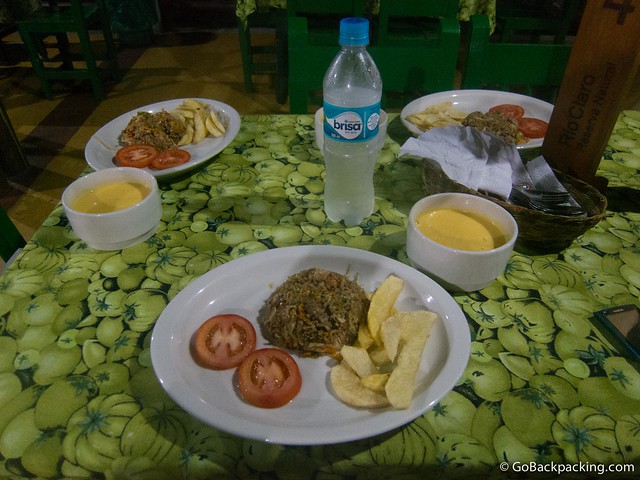
Dinner was basic but sufficient. That night, we had a squash soup and mixed rice with french fries and tomatoes.
I drank some water, before buying a cold beer. Aside from card games, and recounting your adventures from earlier in the day, there’s not much to do at night.
We all headed back to the cabins by 8pm, and were trying to fall asleep by 9pm.

Seeing as how we were in a rainforest, it should come as no surprise that a huge thunderstorm erupted at night. Lightning flashed through the valley, and rain poured down steadily for hours.
Combined with the roar of the river below, it sounded as though we might end up trapped there after all.
But a healthy storm is one of the experiences I appreciate about staying in the jungle, a verdant environment that’s only made possible given the heavy amounts of rain dumped on it annually.

In the morning, we were up early. The beds were fine, but between the rain and river, I found myself waking up often during the night.
We walked back to the main lodge with our backpacks, and sat down for a hearty breakfast, which I thought was better than the dinner the night before.

Our time in Rio Claro was all too short, but I’m glad I had the chance to visit, if only for a night.
_______
We were provided with complimentary accommodation for our visit.

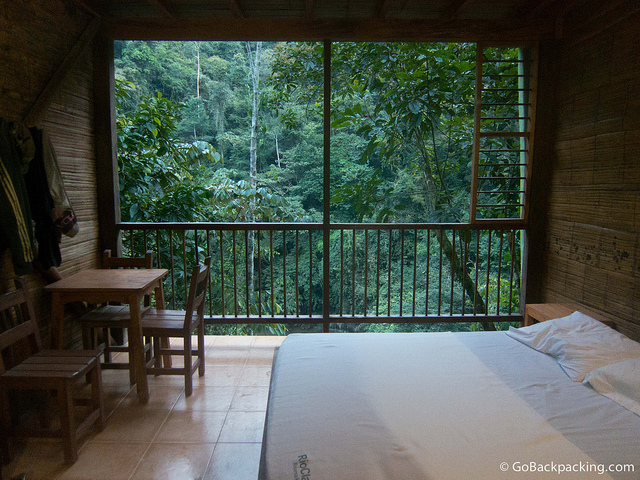

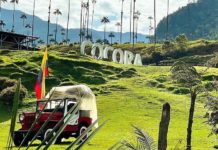


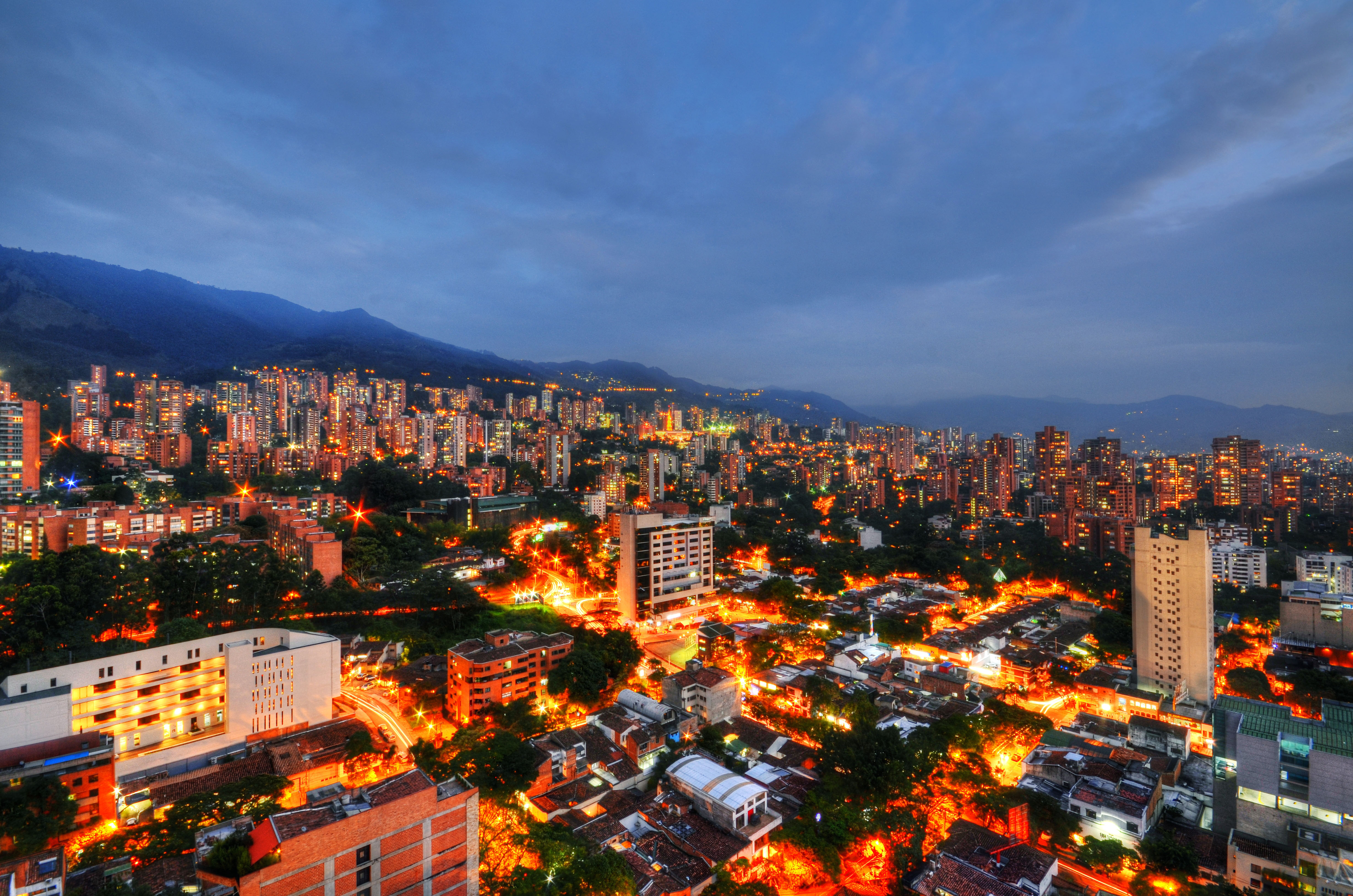






Hiya Dave Nice overall article on Rio Claro! I hope you get to go back when the river is running clear and visit the cave and other activities. They also offer a rock climbing course there now via ferrata.
One thing I wanted to point out is that your prices for accommodations in the refugio cabanas do include all three meals. I believe it is the same for the other accommodations as well. Its also important to try and make a reservation before hand which will save you from paying the 8000 peso entry fee.
I am also home in Florida (Sarasota area on Anna Maria island) for Christmas but will be heading back to Medellin in January. I look forward to meeting you soon!
Cheers, Ron Cannell
Thanks for the correction Ron, and happy holidays.
Is it possible to see much wildlife e.g. monkeys or sloths there?
Theoretically, yes, but you’d have to give it more time than we did, and hike further into the jungle too.
I want to share my experience.
https://www.youtube.com/watch?v=DlaQ9GO_Apg